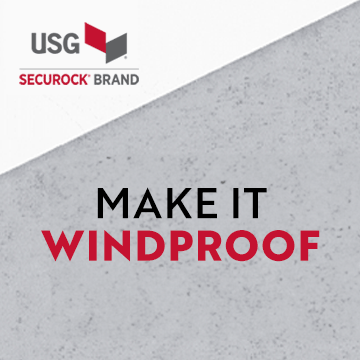power vents and turtle backs
« Back To Roofers TalkHere's one to ponder. My customer has two power vents installed right below the ridge. These vents are the only sources of roof ventilation. I measured the ridge footage and concluded that we could install about 120 feet of ridge vent, which I think would do a hell of a lot of work than just the two power vents which sit within 10 feet of one another. Customer agrees, then argues that $6 a foot for plastic ridge vent is too expensive. Do you guys agree?
More interesting is his opinion that he should leave the power vents in. Left in and disconnected, according to him, they will function the same as turtle backs (low profiles). He's so convinced of this that he wants to add a THIRD power vent that he has laying around in the attic.. It has no motor.. He just wants to hook it up and "use it as a turtle." I have never read that a power vent not running would operate the same as a low profile.. Does anyone want to put in their two cents? I'd be much obliged.
He's a hardhead and wants to have some say in the job. What he is saying is sort or silly but who cares since it will not matter much. Let him be satisified that he got you to do what HE wanted. Its his house after all right? The attic will still ventilate just fine since the openings for the vents are up near the ridge. Get that job or someone else will. If he wanted power fans that are fully functional mixed with ridge vent i would decline. lol
Fayetteroofing, I hesitate to suggest this because I don't want to insult you-,however- if you have a chance I think it might be helpfull for you to attend an AirFlow seminar if the opportunity presents itself.
Before I go farther- let me just say that in general, I think these types of seminars are 99% designed to simply hype a particular manufacturers product-specifically Airflow and Certainteed- but if you get ONE good idea out of it, it can be big money over the years. The certainteed sales seminars in particular- I got one idea from one seminar-and a second idea from the SAME seminar a couple years later- those two ideas together I am SURE have added$200,000 over the last 15 years AT LEAST.
If you were to go to an Airflow seminar-at the very least- you would have a better idea how to handle this type of customer-and have actual lit. available to show him exactly how his idea is possibly going to cause him problems.
I say POSSIBLY going to cause problems-because maybe doing as he wants-won't cause a problem-9 times out of 10-or 99 times out of 100. in my case- for over 20 years it never caused a problem-untill I had TWO problems in the same year-and right across the street from each other!!!!!
so- now I know better-and have added another item to the list of" things I absolutely won't do"
"Here in MN the ventilation is most important in the winter months i wish they would make a temp controll that corresponded with the outside air temp -- so if it is 30 out side the fan would run until it is 30 inside the unconditioned space or within a 5-10 degree difference."
I like that idea.
"I agree that the ridge vent and power vent could work together, but I don't feel experienced enough to be judge whether or not the soffit ventilation is adequate on each and every home that I roof.. And therefore I'd rather not take the chance just yet."
That makes sense too.
Oh and Dennis thank you much for your input.. I have also read your posts on roofer.com and you are quite the advocate of the "Short Circuit Myth." My sister is a physics major and she and I have been discussing it, as well. I agree that the ridge vent and power vent could work together, but I don't feel experienced enough to be judge whether or not the soffit ventilation is adequate on each and every home that I roof.. And therefore I'd rather not take the chance just yet.
Wow everyone has such great input. Minnesota: you brought up a good point.. I don't want to be responsible for old vents. But since they won't even be running I assume there isn't too much that could go wrong there.
wywoody Said: In a way, the customer is right, the holes for the power vents will function like a turtle vent-under certain conditions. In a high heat situation with no wind, they probably will exhaust additional hot air. But moving air is lazy, it will take the pathway of least resistance and that probably will be in the turtle vent and out the ridge vent, disrupting the flow from soffit vents to the ridge vents.
So Survivor you're saying that it's probable that the turtle vent will draw in hot air from outside (as in, hot air from the rooftop)? And then the ridge vent will push it out? Not sure I get it. Please explain what you mean.
1.The power vent without power will work better than the slant back. Without wind, just because it is larger. With wind, because air flowing over the large dome will create low pressure and draw air no matter the wind direction.
2. Ridge vents will work with turtle/slant backs. Without wind, the heat/high pressure in the attic will push out of any exhaust hole. With wind, the airflow/low pressure that is acting on the ridge is also acting on the static vent. Drawing air which equals resistance.
3. A power vent will work right next to a ridge vent. Given adequate soffit intake. Within 3 feet of a typical power vent the air velocity is approximately 2mph. And the airflow/draw direction is mostly directly perpendicular to the vent.
Have you ever fired a customer? This sounds like a situation where I would walk away from a job as he doesn't want to listen to the expert in his field. What Stephen said explains everything. And $6.00 per foot may or not be to much. Depends on what your overhead is, how long it will actually take to do the job, and how much profit you should be making. Roofing companies that use a per ft. per square price on their pricing generally loose a ton of money before they realize what they have done. The only proper way to bid is a time based estimate. Though that is only my opinion.
Heck, if he would have called our company we charge for repair estimates anymore. Why jump through hoops for things that are less than $2,000.00 generally. Homeowners that want to shop can do that to the jacklegs. Serious people will have no problem paying for your time and expertise.
Good luck in whatever you do.
Good morning.
In general, it's possible to be friendly,polite and business-like-while maintaining controll of the situation. In the scenario you described- it looks like you don't have control of the situation :)
Simply put- you can't let the customer design a roof system that YOU will be held responsible for-via a warranty,implied or otherwise.
Explain to the customer- that with a ridge vent-in order to have it work properly,all other vents( power fans, slant backs, gable end vents etc.) need to be blocked off/eliminated. Only the ridge vent ,balanced by soffit vents should remain.
If you don't follow this procedure- you can get into some freaky situations where things are working backwards-air( and snow,and rain) be sucked IN from ridge vents etc.
Since YOU are going to be responsible for the project- it must be done to YOUR specifications- not the customers. If he won't allow you to do it YOUR way- don't do it at all.
regaurding platic ridge vents:- for many years- MANY-when using ridge vents we used the corrogated plastic type, primarily because they were very un-obtrusive.- within the last year we have had 2 seperate installations "back flow". 2 installations in 20 plus years-is 2 too many-and so now,if using ridge vents we will ONLY use baffled designs. In retrospect- the 2 problem installations were not balanced with soffit vents as well as I would have liked. ALL of our work is old house work-and soffit ballanced intake is not always practical. In retrospect- slant backs may have been a better choice.
Best wishes to you, stephen
I tried that, and he said I wasn't following his "line of thinking.." He seems insistent on leaving those power vents in, since they function the same as turtle vents.. But is that really true? Disconnected, the power vents do the same thing?
























